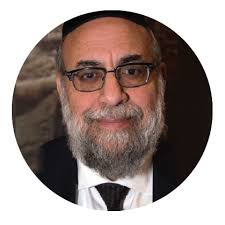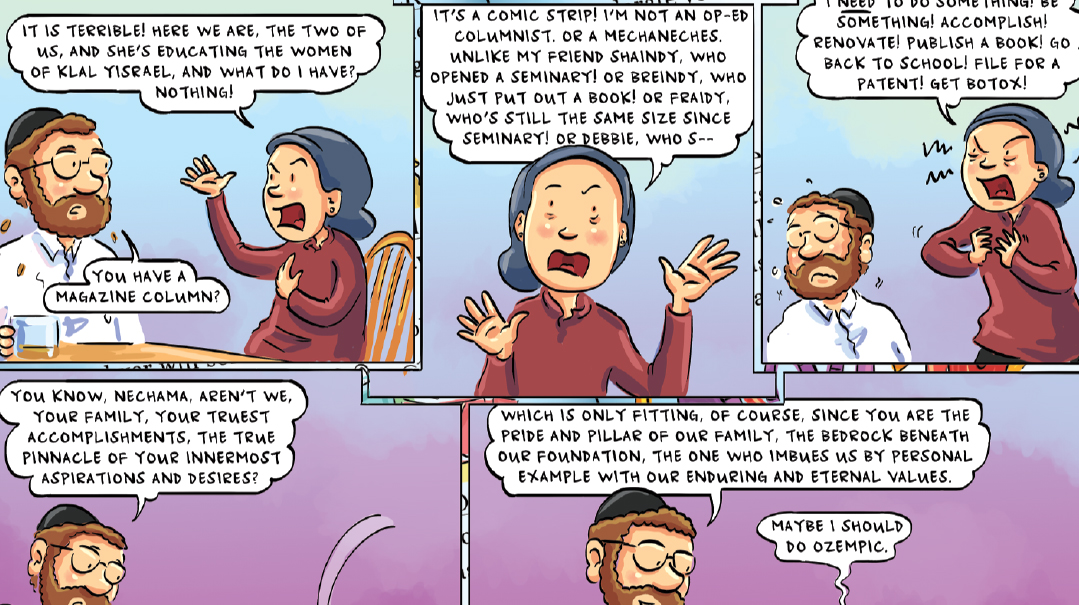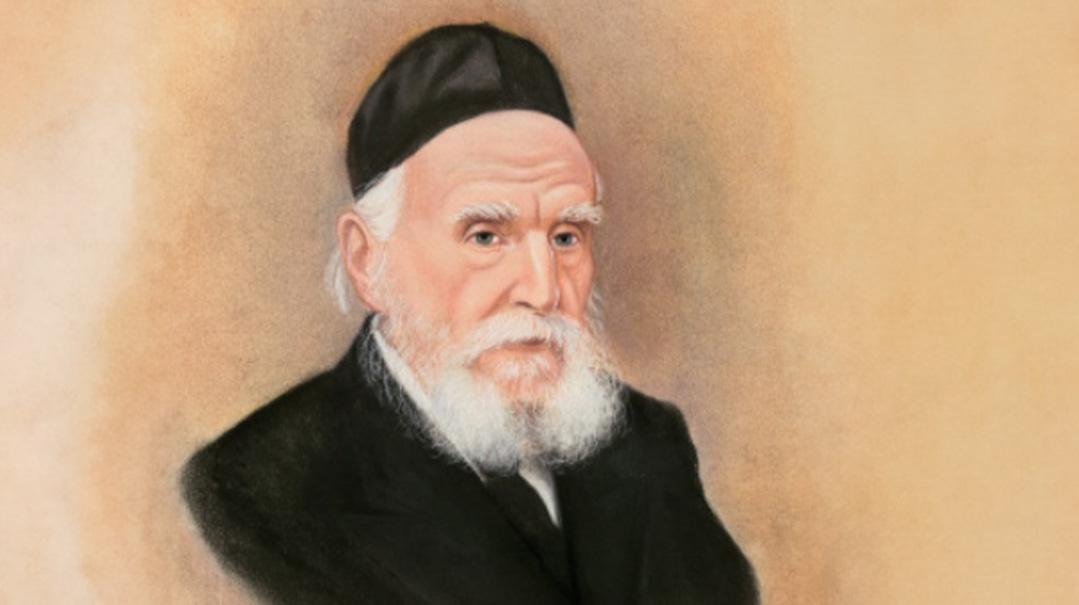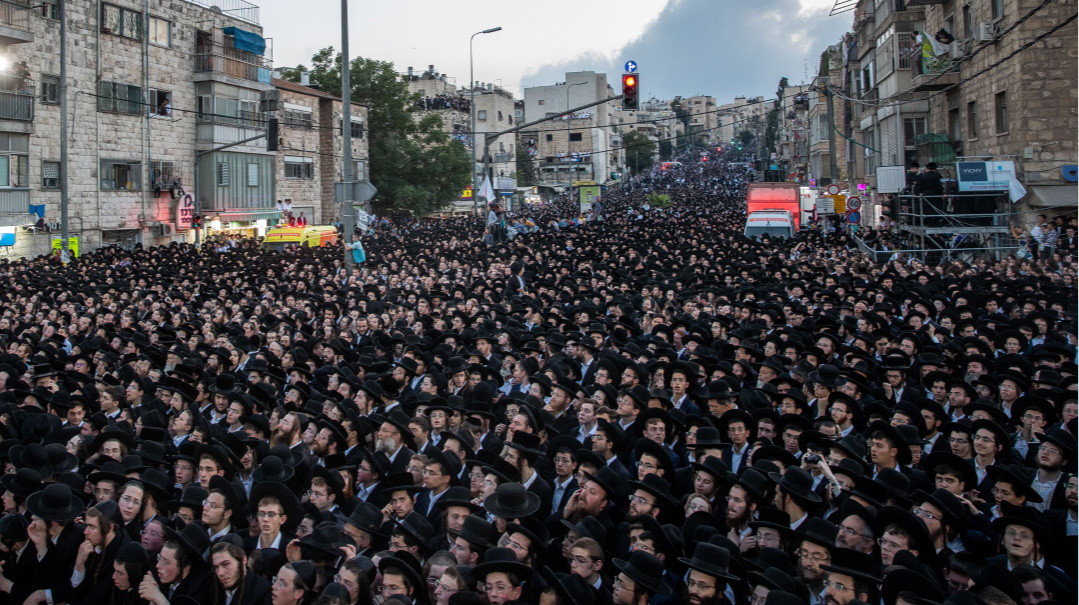Tefillah’ed Out

Is it burnout, or something else? Or are we just all “tefillah’ed out”? I am afraid it is something else completely
AS Klal Yisrael commemorates the second yahrtzeit of Maran Rav Chaim Kanievsky ztz”l and reflects upon our colossal loss, we long for the missed opportunity to hear, even just one more time, the Sar HaTorah’s words of chizuk and advice on how to navigate through this tragic period we are currently undergoing in Eretz Yisrael.
While unfortunately the Hashgachah Elyonah didn’t allow for that to happen, we will have to suffice with an oft-repeated recommendation — or rather, a plea — from Rav Chaim that we heard from him many times over the years. When he was asked, “What can a person do with regard to the terrible matzav in Eretz Yisrael at this time?” he would always respond, “Tefillah!” When asked further, “Is that all?” Rav Chaim would respond, “Tefillah is not a small thing.”
While some of us have been involved in nonstop chesed since October 7, and others have even traveled on chizuk missions from the north to the south, for most of us, all we can participate in is communal or personal tefillah.
As the Yom Tov of Purim rapidly approaches, a period starting with Taanis Esther that reinforces for us the incredible importance and significance of tefillah as the source of our salvation, maybe it’s the time to ask ourselves the question: Are we as individuals and as a community “tefillah’ed out”?
It’s been more than five months since Simchas Torah, when our very lives were turned upside down by the horrific slaughter of our brothers and sisters, and the ongoing war that has claimed so many young lives, leaving behind a generation of yesomim and almanos with no end in sight. We are all living through a resurgence of Eisav soneh es Yaakov in every corner of the globe, something not seen since the years before World War II. And it is coming from all sides, from friend and foe alike.
And through all of that, we have taken our Tehillim in hand and have not yet let it go. After each minyan and in every shul and at every public gathering and in every yeshivah, the powerful words of Dovid Hamelech have not stopped reverberating from our lips.
However, things have slowly been changing. Even a casual observer can’t help but notice that the number of people in the shul who quietly exit before the start of the Tehillim has been slowly increasing. The number of kapitlach being said are slowly decreasing. And even if the numbers have not diminished, clearly the enthusiasm surely has.
Is it burnout, or something else? Or are we just all “tefillah’ed out”? I am afraid that it is something else completely.
Case in point. During this past Chanukah, I, along with dozens of rabbanim throughout the Five Towns area, received an email that originated from an incredible rav and someone who is a great “mezakeh es harabim.”
Rav Yisroel Reisman from Flatbush called on rabbanim to ask their balabatim to dedicate some time on Sunday morning Chanukah, which traditionally is a day spent on running from one family party to another, to instead this year use the time for tefillas rabim for acheinu bnei Yisrael, since we are in an eis tzarah. A dear chaver, Rav Aryeh Leibowitz of North Woodmere, forwarded the email to all the rabbanim in the Five Towns. Within an hour, most of the area shuls had committed to participate in this important community effort.
In my own shul, the Chofetz Chaim Torah Center of Cedarhurst, we initiated a half-hour chizuk shiur in which I shared some of the very painful things I witnessed the week before on a visit to Kfar Aza and other communities in the Gaza Envelope, and then we all joined in a half hour of heartfelt Tehillim for Eretz Yisrael.
Like many of the other participating shuls, we had a full house. Later that day, I sent a brief note of appreciation to Rav Reisman and Rav Leibowitz for sharing the idea for this with us, relating how it had been a kiddush Hashem (part of that letter appeared later that week in the FJJ). However, what had given me real personal chizuk was that a regular mispallel who had never stayed for the Tehillim after davening came especially that day, and participated in all of the Tehillim with great seriousness. I felt the whole program in the shul was worth it just for that.
However, within the next day or so, the absolutely horrific news of the inadvertent killing of three hostages was made public. This fellow came knocking on my door and shared with me, with great pain and emotion, the thoughts going through his mind and heart at that moment.
He said, “You see, Rabbi Ginzberg, I have for years doubted that my personal tefillos really have any effect on what happens to anyone or anything in the world, beyond my own personal situation. Yet when I heard your derashah on Shabbos about the koach of our individual tefillos, and then I saw your heartfelt email asking us to come on Sunday to daven for Eretz Yisrael, it really moved me, and so I came. And I indeed davened with all my heart and soul. And now look at what happened. Within the next few days, a tragedy even worse than the day before. I understood once again that my insignificant tefillos do not make any difference.”
I responded to his heartfelt admission like many of us would; we have to keep trying our best, and we just never know what difference even one tefillah can make.
If I had made any headway with him at all, it was all lost when immediately after the next time he came and participated in the Tehillim, the news was so horrific that it was probably the worst news since October 7. That was the day that two buildings wired for demolition exploded due to a tank shell hitting one of the buildings, and 21 soldiers tragically died al kiddush Hashem at one time. He walked out and has not yet returned for any public Tehillim gathering since that day.
Now before we start thinking that this person doesn’t get it, and something is sorely lacking in his understanding of how tefillah works, let’s first take a moment to do some soul-searching and introspection and think about whether we are really any different from him.
After much thought and discussion with a few colleagues, I believe that on some level, we all suffer from similar thoughts. Hence, Klal Yisrael is approaching a collective syndrome of feeling “tefillah’ed out.” If so, we need to get back on track immediately — and if not for ourselves, then for Klal Yisrael, who so desperately need our tefillos.
Let’s review together some of the fundamental facts about tefillah found in Chazal and in the thoughts of our gedolei Yisrael.
First, is the realization that tefillah has in it the power to turn everything around and create open miracles for us.
For years, I had difficulty understanding a certain Chazal — the one that tells us when one comes to a place where a miracle occurred for our ancestors, one should make a brachah of she’asah nissim; and there are several examples of these type of places listed, one of which is the place where Moshe Rabbeinu sat on a rock during the battle with Amalek. And my difficulty was: Why is this place listed as one of the places where miracles happened for our ancestors? The stone Moshe Rabbeinu sat on had nothing to do with the miracle; it was the tefillos of Klal Yisrael that won the war!
This past summer I heard a beautiful explanation from Rav Yonasan Sacks, a rav in Passaic. He explained this Chazal to mean that since tefillah has the power to literally change the nature of the world, to change teva, then surely the place was transformed to a place of nissim and therefore requires a brachah.
Second, is the fact that tefillah can even change a Heavenly decree that has already been made in Shamayim against an individual or Klal Yisrael. Chazal taught us that after Moshe Rabbeinu had davened 515 times to be allowed to enter Eretz Yisrael, Hashem instructed Moshe to stop davening; and even though the decree had already been made and sealed, if Moshe had davened even one more time, he would have succeeded in overturning the Divine decree.
Rav Eliyahu Lopian (Shevivei Lev, no. 175) said we learn from here that not even a Heavenly decree signed and sealed by the Al-mighty Himself is able to withstand the incredible koach of even one tefillah.
Third, the koach hatefillah is sometimes the only thing that can be effective in ensuring that our children follow the path that we prepared them to follow. The Beis Yisrael explained that we see in Chazal that Yosef Hatzaddik was only saved from defilement in the land of Mitzrayim due to his father Yaakov’s tefillos and shedding of tears as he refused to be consoled.
Fourth, Chazal explain in many places how significant a tefillah is that one offers on behalf of another, especially if he needs the same thing that he’s davening for the other person to receive. Around 20 years ago, I heard from my distinguished brother-in-law Rav Betzalel Rudensky an incredible insight from the Avnei Nezer that explains the secret behind a great tzaddik passing away at a young age.
The great Sfas Emes had died very young from a mysterious illness that no one could diagnose. The Avnei Ezer explained to his student why it happened in this manner. It was known that Yidden from all over the world flocked to the great Sfas Emes to plead with him to daven for them or their relatives when they contracted a particular illness.
He davened for each and every one of them; he davened for refuah for people suffering from every illness known to man. Chazal teach us that if you daven for someone else’s need and you have the same need, your tefillah will be answered first. So the only way HaKadosh Baruch Hu could take the holy neshamah of the Sfas Emes back to Shamayim was to give him an illness so rare that no one had ever gotten it before. The Sfas Emes had never davened for this illness to removed from someone else, and therefore he didn’t have the protection that his tefillos for other illnesses would have given him. An incredible insight, not only into the mysterious ways of Hashem, but also into the koach of a tefillah.
Fifth, we also learn from Chazal that no tefillah ever goes to waste. Sometimes HaKadosh Baruch Hu preserves those very tefillos for many years later, when Klal Yisrael desperately needs those zechusim. The mefarshim wonder: Why would Hashem let Avraham Avinu daven again and again to save the city of Sedom when He already knew that it would not help at all?
The Dubno Maggid explains that Hashem knew there would come a time many years later when Avraham’s children would suffer in a bitter galus and might not have enough zechusim of their own to be saved. So HaKadosh Baruch Hu will reach into His own storagehouse and pull out the tefillos Avraham Avinu offered on behalf of the city of Sedom, and use them to save His own children in a time of need.
We need to reinforce our perception of the power of our tefillos in any way we can. The points referenced above give just some examples of a few of the ways to do so.
Well, if we are all so aware of the importance of tefillah, and how, without it, we have no chance for not only success but for survival itself, then why is it so hard for us to focus properly? The answer is an age-old powerful weapon of the yetzer hara, the danger of “hergel.”
Chazal in many places warn of us the extremely powerful and destructive weapon in the arsenal of the Satan, and that is the koach of hergel. Simply put, it means to be aware of the pitfall of “getting used to a given situation,” as that can cause us to fall into his trap and descend into the abyss.
The Midrash sets the scene for us: All the children of Yaakov Avinu came to the Mearas Hamachpeilah to bury their father as he requested. However, Eisav Harasha suddenly appeared with his small army and prevented them from doing so, claiming it belonged to him. When they argued with him that their father had bought it from him along with the bechorah, he asked them for proof.
They immediately dispatched the fastest among them, Naftali, to return to Mitzrayim to retrieve the document of sale. Meanwhile, Chushim, the deaf only son of Dan, asked those around him what all the commotion was about. When they told him, he famously proclaimed, “Avi aviv mutal babizayon [The father of my father is lying in shame],” and he took out his sword and chopped off Eisav’s head.
This raises the question: Weren’t all of the other sons and grandsons present equally bothered by witnessing the degradation of Yaakov’s aron? Why did only Chushim react?
My son-in-law Rav Yudi Jeger referenced an incredible insight from Rav Chaim Shmuelevitz (in the back of Koveitz Sichos), in a shmuess he gave in Yeshivas Mir right after the Yom Kippur War. He explained that as painful as it was to observe Yaakov’s aron being degraded, the others got used to the situation, on some level. They had grown accustomed to seeing it, and therefore it did not have the same effect on them that it had on Chushim, who was learning of it for the first time.
Rav Chaim explained to his students that although they had become somewhat used to the tragedy of the terrible loss of life that the first days of the Yom Kippur War brought onto Klal Yisrael, they had to work on themselves to not become comfortable with the situation and to feel the same pain and sense of loss that they felt at the beginning of the war.
We are now more than five months into this horrific and incomprehensible tragedy of the war with Hamas (yemach shemam), and we have to work very hard on ourselves to continue to feel the shock and pain that we felt on the first days after October 7. Without doing that, our tefillos will become harder and harder to maintain as the days painfully move along. We must do everything we can to prevent the feelings of hergel from seeping into our mindset and consciousness.
We are soon going to complete the two months of Adar and enter into the chodesh of geulah, Chodesh Nissan. A new month means a new mindset, something that is so hard to attain in these difficult days that lie ahead. Who can think of the Four Questions, when our heads are filled with so many other different types of questions?
Will the north explode into a full-scale war? Will Hamas really be defeated? How many more korbanos until the war is completed? Will all the infighting start up all over again? When will the situation in Iran become completely intolerable?
So many questions that only Mashiach and the Geulah will be able to answer. We don’t want Mashiach now, we desperately need Mashiach now.
There are many different names for “prayer” besides tefillah. There are rinah, ditzah, chedvah, and shirah (among others). What exactly does “shirah” mean? I recently attended a seudas hoda’ah someone made following a lifesaving medical procedure, and he explained it as follows.
Shirah also means a circle, as we see in Bava Metzia 25a; coins found arranged in a “shir” must be collected for hashavas aveidah, and Rashi explains that a “shir” means a circle, like a bracelet. So when Miriam said shirah at Kri’as Yam Suf, she was able to do so; as Chazal say, she waited by the Nile River when her mother put her baby brother into a basket, to witness what would happen to him. Having witnessed her “baby brother” Moshe split the sea for Klal Yisrael to pass through, she had come full circle, meriting to see the whole story, from the very beginning to the end. She was able to sing shirah, the ultimate tefillah of recognition of HaKadosh Baruch Hu’s gevurah in the world.
We will all very soon be sitting at the Seder table and together with our children and grandchildren singing “Shirah Chadashah.” May all of Klal Yisrael merit to sing the ultimate shirah and see the whole picture. To be able to come full circle and finally understand why all this pain, all this loss, all this suffering, and this incredible horrific situation happened. And it will all become clear to us and we will finally understand that somehow it was all to get us to the finish line of being a mamleches kohanim v’goy kadosh.
HaKadosh Baruch Hu, please let all of your children — the soldiers, the hostages, the eirev rav, and of course all of the yesomim and almanos finally join together to sing the ultimate shirah. The song of the Geulah in the very month that we were assured it will happen, as Klal Yisrael has never forgotten even for a moment the mother of all promises, “b’Nissan nigalu uv’Nissan asidin niga’eil.”
May it happen speedily in our day.
This article was written l’zecher nishmas Sara Chaya z”l bas Rav Aryeh Zev
Rabbi Chaim Aryeh Z. Ginzberg is the rav of the Chofetz Chaim Torah Center of Cedarhurst and the founding rav of Ohr Moshe Institute in Hillcrest, Queens. He is a published author of several sifrei halachah, sought-after lecturer and writer on Torah hashkafah, and author of the best-selling chizuk resource Rays of Hope (ArtScroll).
(Originally featured in Mishpacha, Issue 1004)
Oops! We could not locate your form.






